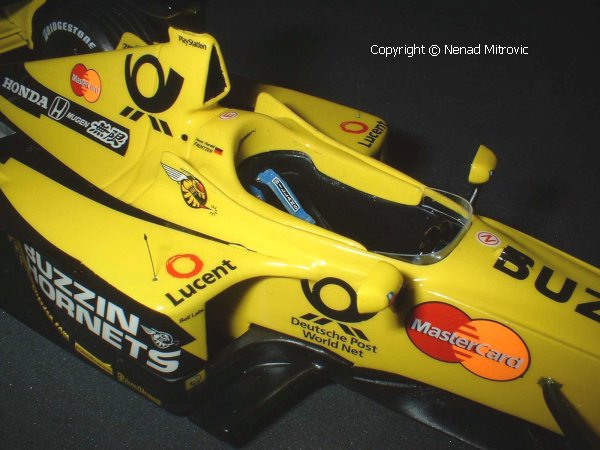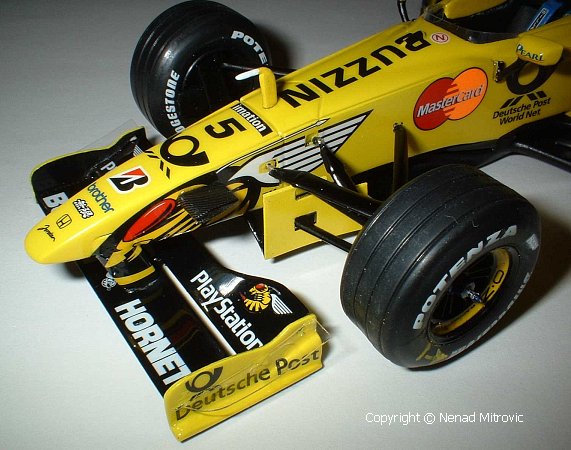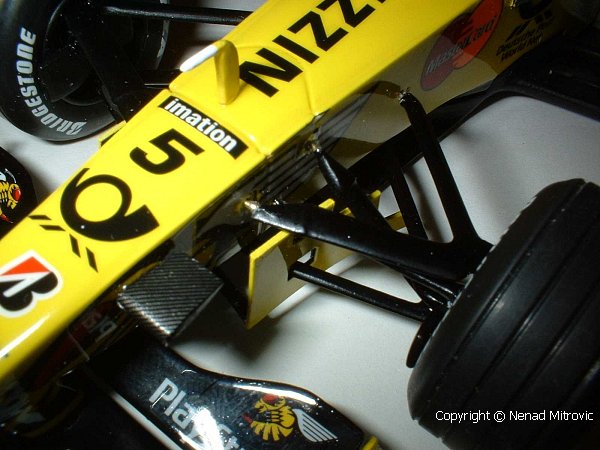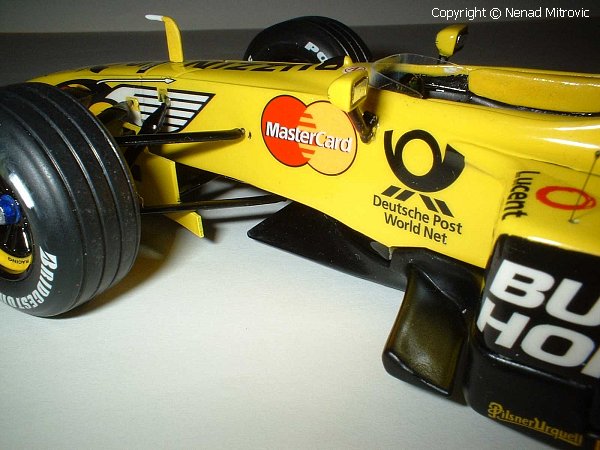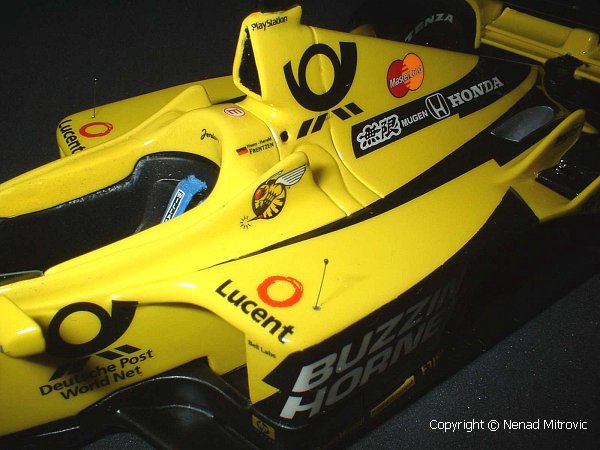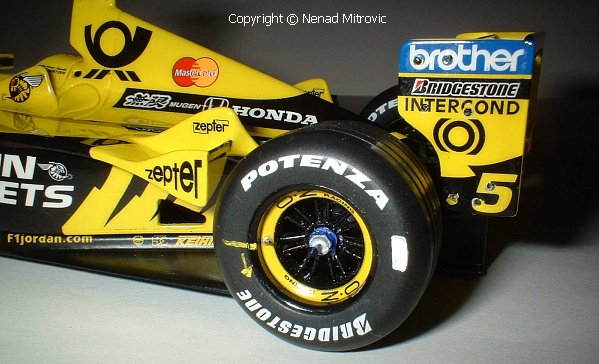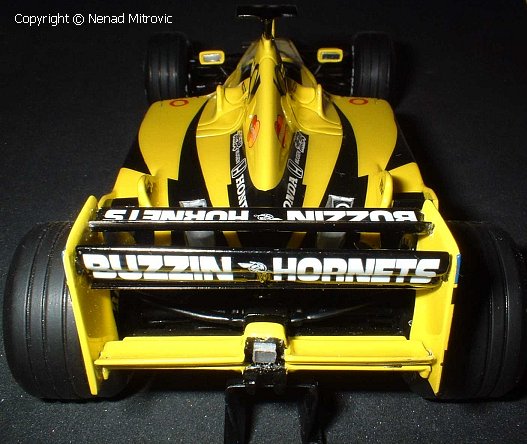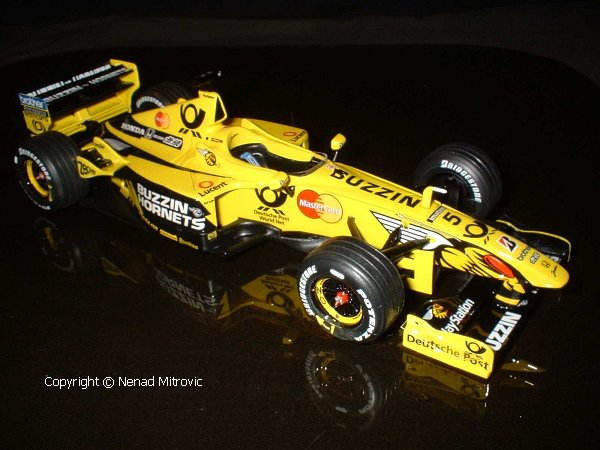
1/24 Jordan EJ10
Model, Text and Photos by Nenad Mitrovic
This kit is manufactured by Revell AG from Germany. It's 1/24th scale and the decals are from Cartograph (Italy). This I believe is the kit's only saving grace. The decal sheet is sensational. Worth it for the decals alone.
Follow along my build journey as I set out to recreate a great looking car in miniature..
The cockpit is split along the bottom and around the front suspension. I glued in the suspension into each half, and then cut off the arms. The parts remaining inside the cockpit are used as guides. I drilled insert holes into these stubs and also drilled a corresponding hole in the arms in which I placed a brass pin. The Bodywork was prepared and I sprayed a mixture of Duplicolor Ford Yellow Glow and Duplicolor Fluorescent Yellow over a white base. This was clearcoated and then the beautiful decals applied.
It took about 1 weekend worth of work to decal the model. After drying, the parts were clearcoated twice.
The tyres on the EJ10 were bad and undersized, so I pilfered a set of tyres from the Revell TF102. The increased diameter of the tyres posed a problem with ride height at the rear, so I added 2 mm of plastic as a bump stop to lower the chassis by a corresponding amount. This counteracts the height offset of the new tyres over the original.
The engine block and suspension is not readily visible in detail as the cowling is fixed. So, I treated it as a one-piece unit and sprayed it matt black.
I thinned the wing endplates (both front and rear) and also thinned the leading edge of the wing elements (both front and rear) I replaced the clear styrene pieces with clear acetate that I got from my child's cotton bud packet. I added seatbelts to the cockpit and with some detail painting, it looks quite similar to the actual car. I replaced the bargeboard with sheet plastic and also fabricated a nose camera.
During the 2000 season, the Jordan EJ10 had sidepod radiator hot air ducts just prior to the rear wheels in the scalloped coke-bottle portion of the car. The size of this aperture was dictated by the specific purpose. For qualifying it was almost never there. For the races it was seen in most of them. This particular car is modelled on that raced at the French GP.
My particular model did not have a very good mounting for the wheels so I fabricated new ones with brass tube. I made the centre locknuts from hexagonal plastic rod and the guide pin I turned on my lathe from brass rod. These were painted and then epoxied into place. The rear ride height dictated the front ride height. The model was mounted on sheet plastic shims and the front suspension set and epoxied in place.
The nose pitot tube was added and sidepod antenna's and now the model was ready to face the world.
These Revell kits need a bit of work but the Decals are sensational. With some planning, care and attention I feel that a very nice model can be achieved.
